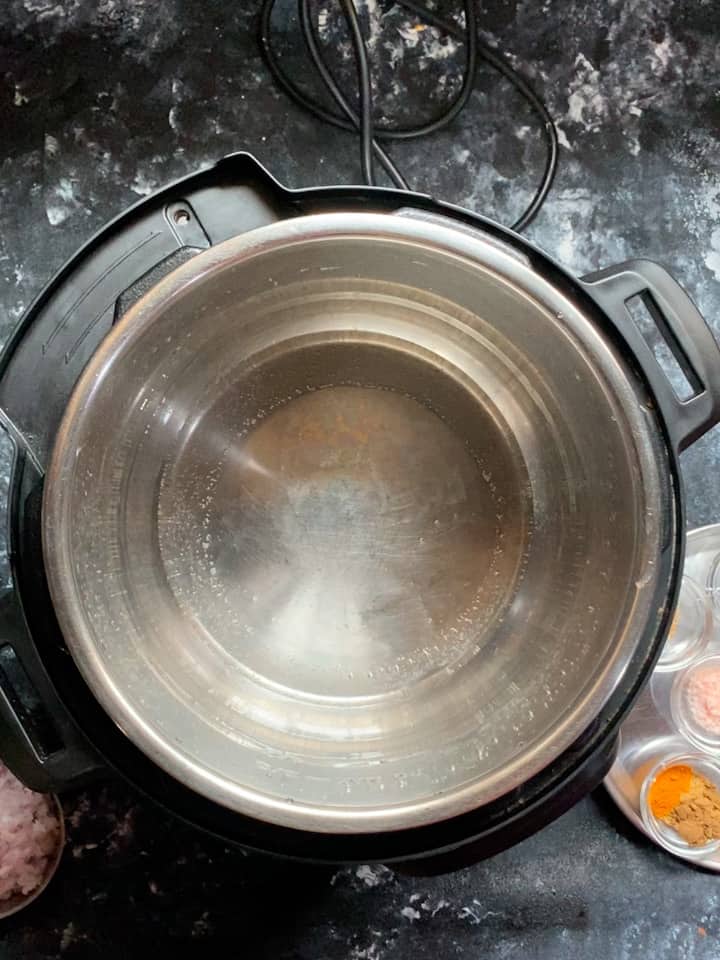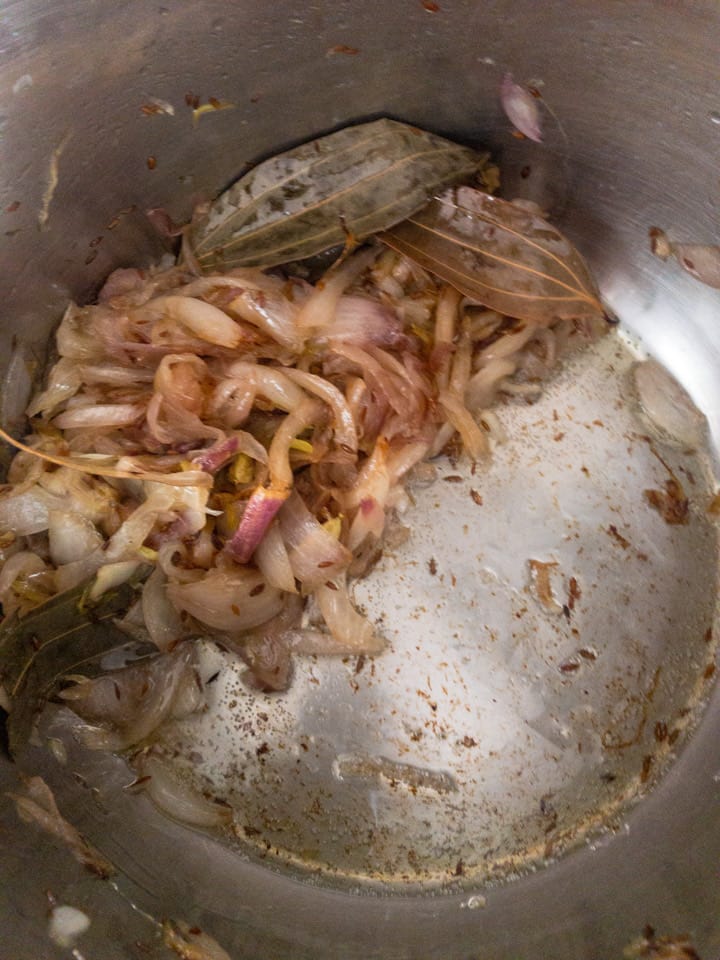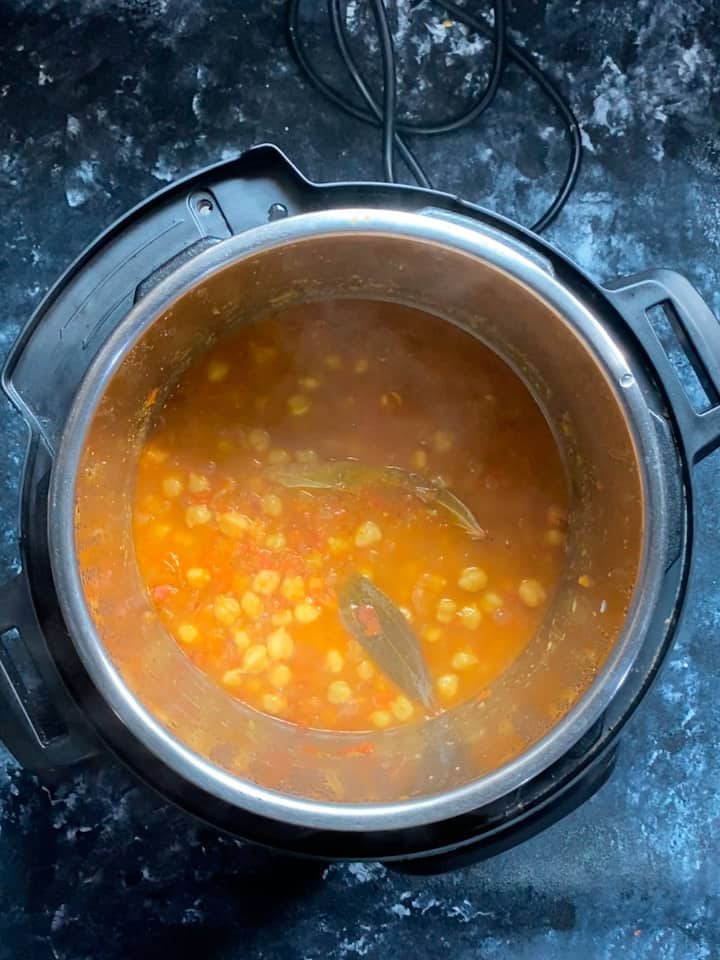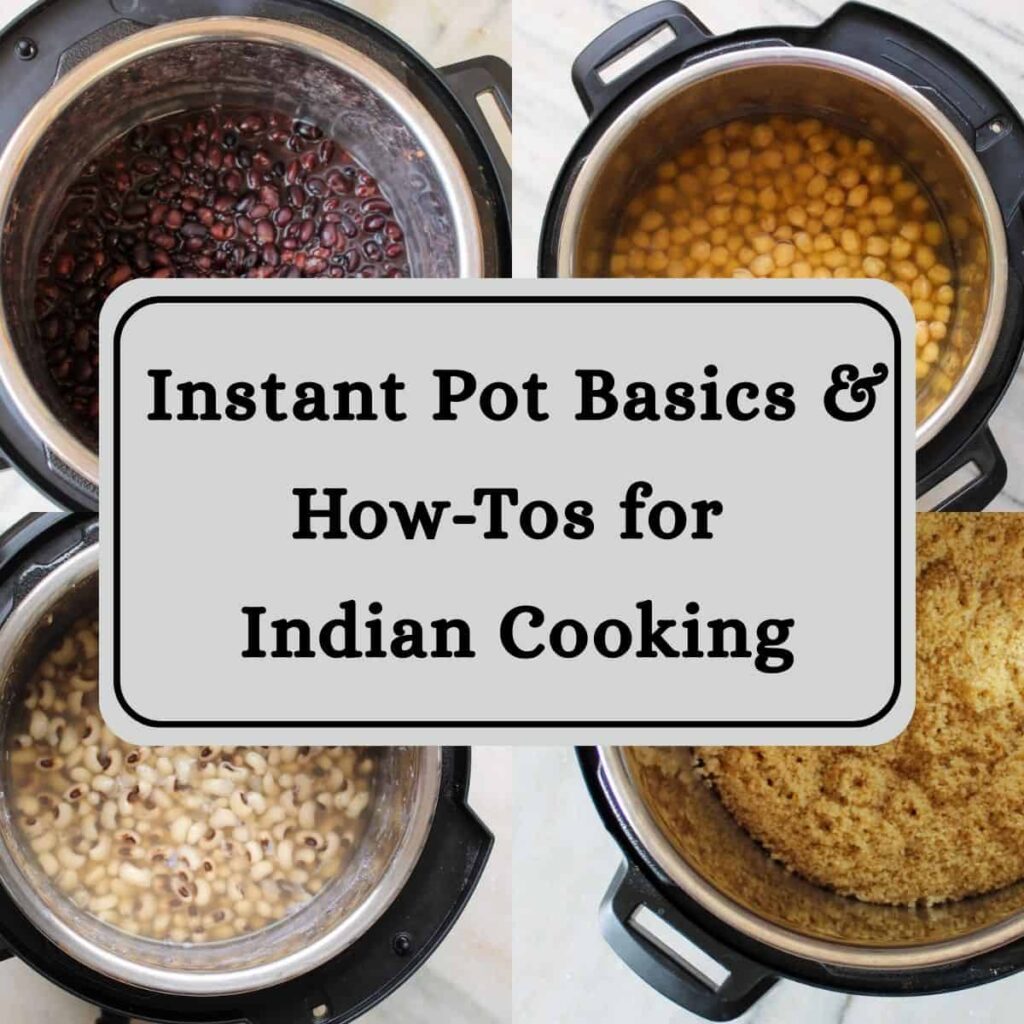Here is my detailed Instant Pot Indian Cooking Guide. If you have ever wished Indian cooking could be faster and more hands-off, you are in the right place. The Instant Pot makes it easier to enjoy home-cooked dals, curries, rice dishes, and everyday staples without spending hours in the kitchen.
This guide has everything you need to get started with Indian cooking in the Instant Pot. From basic functions to essential techniques, you will find step-by-step tips and links to detailed how-to guides for beans, grains, sauces, and more.
If you’re just starting out or looking to simplify everyday Indian cooking, this page will help you use your Instant Pot with greater confidence and less guesswork.

Jump to:
Getting to Know Your Instant Pot
Before we begin cooking, let’s review the parts and buttons we use most often, especially for Indian recipes.
Inner Pot
This is where all the cooking happens. Most Instant Pots come with a stainless steel inner pot that’s durable, easy to clean, and perfect for Indian cuisine.

Lid & Sealing Ring
The lid locks into place and creates pressure inside the pot. Inside the lid, you’ll find a silicone sealing ring, forming the airtight seal needed for pressure cooking. Always check that it’s clean and properly positioned before you start.
Steam Release Valve
We have a small valve on top of the lid that lets you control pressure release. It has two settings:
- Sealing (for cooking under Pressure)
- Venting (to release steam after cooking)
Control Panel & Useful Buttons
Here are the main buttons we often use for Indian meals:
- Sauté: Perfect for tempering spices, browning onions, and building a flavor base.
- Pressure Cook (or Manual): This is the go-to option for cooking dals, beans, rice, and curries.
- Keep Warm: Keeps food warm after it’s done cooking, great for prepping ahead.
- Cancel: Stops the current function. Use this when switching from Sauté to Pressure Cook.
- +/- Buttons: Adjust the cooking time as needed.

Trivet
This is the small metal rack that comes with your Instant Pot. It is used to steam foods like vegetables or sprouts above the liquid.
Essential Instant Pot Techniques for Indian Cooking
Once you are familiar with the basics, these simple techniques will help you get the most out of your Instant Pot for everyday Indian meals.
🔥 Sautéing for Flavor (Tadka / Tempering)
Most Indian recipes begin with tempering whole spices and sautéing aromatics to build flavor. The Sauté function in the Instant Pot lets you do this right in the same pot, and no extra pans are needed.
How to Do It:
Press the Sauté button and wait until the display reads “Hot.” Add oil or ghee, followed by whole spices like cumin seeds, mustard seeds, or dried red chilies. Let them sizzle and release their aroma. Then add chopped onions, ginger, and garlic, and cook until golden and fragrant.
👉 Want to see this in action?
Check out my Instant Pot curry sauce recipe for a practical example, where I use the saute function to brown the onions.

⚡ Pressure Cooking for Quick, Even Results
Pressure cooking is the Instant Pot’s superpower. It cuts cooking time in half while making dals, beans, and curries perfectly tender.
How to Do It:
After sautéing (if needed), add the rest of your ingredients along with the right amount of water or broth. Close the lid, set the steam release valve to Sealing, and press Pressure Cook (or Manual). Set the time and let it do the work. Once done, it will either count down or switch to Keep Warm until you’re ready to release the Pressure.

🕓 NPR vs. QPR: When to Release Pressure
Knowing which release method to use makes all the difference.
- Natural Pressure Release (NPR): Let the pressure release on its own. This is best for dals, soups, and anything with more liquid to prevent splattering. Depending on the quantity, it takes 10 to 30 minutes.
- Quick Pressure Release (QPR): Gently turn the valve to Venting to release steam quickly. This is ideal for rice, vegetables, or when you want to stop cooking immediately. Use caution when releasing the steam!
🥦 Steaming for Quick & Healthy Sides
You can also use your Instant Pot to steam vegetables or sprouts—perfect for pairing with rice, dal, or curries.
How to Do It:
Place the trivet inside the pot and add about 1 cup of water below it. Arrange your veggies or sprouts in a bowl or plate on the trivet. Close the lid, set the valve to Sealing, and use the Steam function or set Pressure Cook to 0 to 2 minutes, depending on what you’re steaming. Follow with a QPR.
Cooking Everyday Indian Ingredients in the Instant Pot
The Instant Pot makes it so much easier to cook Indian pantry staples, from dried beans to fluffy rice and even breakfast grains. Here are quick links to detailed step-by-step guides that walk you through each one.
Dried Beans
With the Instant Pot, you can cook beans that are perfect for everyday curries, rice bowls, or meal prep. Check out these detailed guides that will help you cook both dried and soaked beans in the Instant Pot.
Rice & Whole Grains
Whether you’re making plain rice or building a one-pot meal, these guides will help you get the right texture every time.
Safety Tips for Using Your Instant Pot
Pressure cooking is safe, but only when used correctly. Keep these tips in mind every time you cook:
- Read Your Manual: Each model is slightly different, so get to know yours.
- Don’t Overfill: Never fill past the max line, especially with beans or foamy dals. Dried beans usually expand up to three times, so be extra careful when cooking dried beans and legumes.
- Check the Sealing Ring: Make sure it’s in place and not damaged.
- Be Careful with Steam: Always keep your face and hands away from the valve when using QPR.
- Clear Blockages: Ensure the steam release valve and float valve aren’t clogged before you start.
Troubleshooting Common Instant Pot Issues
The Instant Pot usually works like a charm, but if something feels off, don’t worry, and most issues are easy to fix. Here are a few common problems you might come across and how to handle them:
⚠️ Got a “Burn” Notice?
This usually means something is stuck to the bottom of the pot, and the Instant Pot is overheating.
How to prevent it:
- Always add enough liquid, especially when cooking dals or thick curries.
- After using the Sauté function, deglaze the pot by adding a splash of water and scraping up any browned bits before pressure cooking.
- Avoid stirring thick sauces into the bottom and layer them on top instead.
🔄 Lid Won’t Seal
If the Instant Pot doesn’t come to Pressure, it’s often due to a sealing issue.
What to check:
- Make sure the sealing ring is clean and properly fitted inside the lid.
- Check that the steam release valve is set to Sealing.
- Wipe the rim of the inner pot. Any food stuck there can prevent sealing.
🍛 Food Isn’t Cooking Properly
If your dish comes out undercooked, a few settings might need adjusting.
Quick checks:
- Double-check the cooking time and pressure level in your recipe.
- Make sure the valve was set to Sealing during cooking.
- For beans and dals, make sure they are soaked (if needed) and that you’re using the correct water ratio. When working with dried beans and dals, make sure to use the correct water ratio, as these absorb more water.
These small fixes go a long way toward ensuring that your Instant Pot meals turn out the way you want them: flavorful, tender, and ready on time.
Ready to Build a Full Meal?
With these foundations in place, you’re ready to make flavorful, comforting meals with ease, even on your busiest days. Try pairing these techniques with my favorite Instant Pot recipes:
Check out my Indian Vegetarian Lunch Ideas post where I share real lunch plates from my kitchen and each one uses these Instant Pot staples in simple, delicious combinations.

